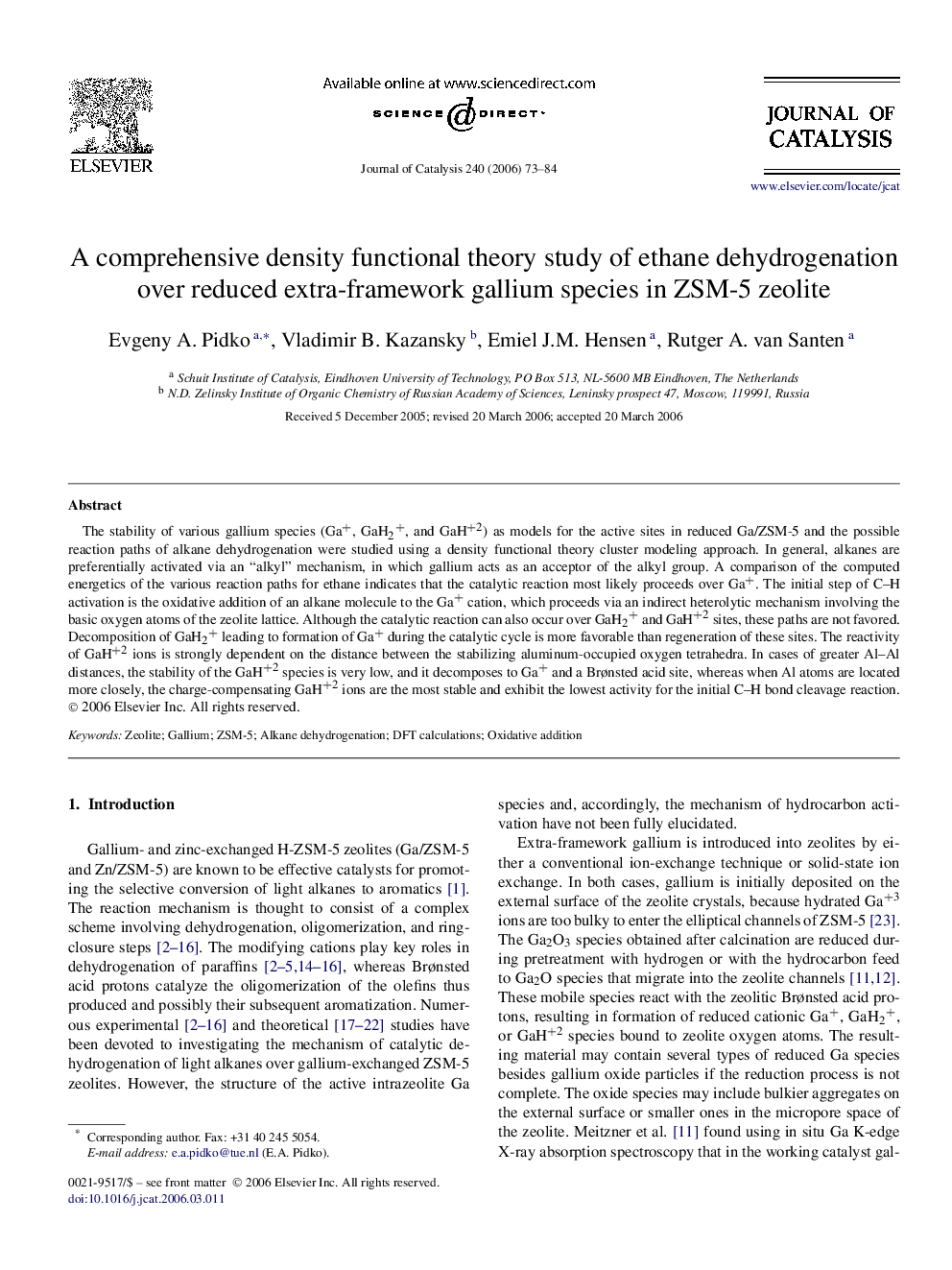| Article ID | Journal | Published Year | Pages | File Type |
|---|---|---|---|---|
| 63273 | Journal of Catalysis | 2006 | 12 Pages |
The stability of various gallium species (Ga+, GaH2+, and GaH+2) as models for the active sites in reduced Ga/ZSM-5 and the possible reaction paths of alkane dehydrogenation were studied using a density functional theory cluster modeling approach. In general, alkanes are preferentially activated via an “alkyl” mechanism, in which gallium acts as an acceptor of the alkyl group. A comparison of the computed energetics of the various reaction paths for ethane indicates that the catalytic reaction most likely proceeds over Ga+. The initial step of CH activation is the oxidative addition of an alkane molecule to the Ga+ cation, which proceeds via an indirect heterolytic mechanism involving the basic oxygen atoms of the zeolite lattice. Although the catalytic reaction can also occur over GaH2+ and GaH+2 sites, these paths are not favored. Decomposition of GaH2+ leading to formation of Ga+ during the catalytic cycle is more favorable than regeneration of these sites. The reactivity of GaH+2 ions is strongly dependent on the distance between the stabilizing aluminum-occupied oxygen tetrahedra. In cases of greater AlAl distances, the stability of the GaH+2 species is very low, and it decomposes to Ga+ and a Brønsted acid site, whereas when Al atoms are located more closely, the charge-compensating GaH+2 ions are the most stable and exhibit the lowest activity for the initial CH bond cleavage reaction.
